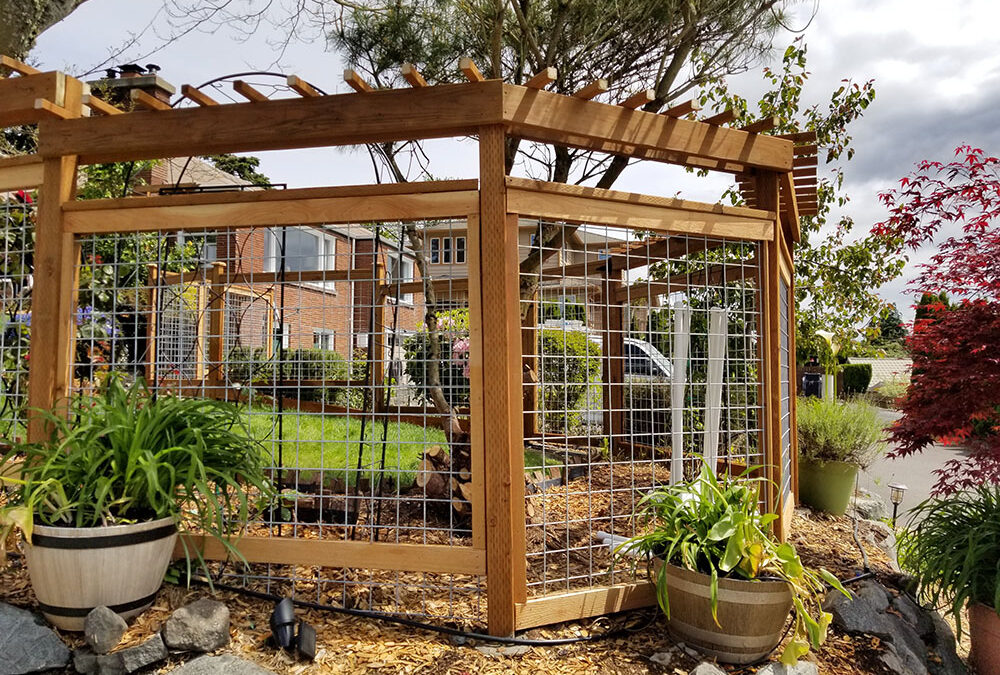Your fence is one of the first things people notice when they come to your home. Whether it’s for privacy, security, or curb appeal, it does a lot of heavy lifting. But here’s the thing: most homeowners install a fence and forget about it—until it starts leaning, rotting, rusting, or falling apart. At that point, repairs can get expensive, and full replacements? Even worse.
So, if you’ve got a fence—or you’re thinking about installing one—let’s talk about how to make it last longer. We’ll cover the most common types of residential fences, what damages them, and what you can do (without needing a handyman every other month) to keep yours standing strong for years.
Think about your fence like your car. If you never wash it, never change the oil, and just let it sit out in the sun and rain, what’s going to happen? Same thing with fences.
Weather, moisture, bugs, soil movement, and even stray baseballs can take a toll over time. But with a little routine care, you can easily double (sometimes triple) the lifespan of your fence.
Different materials need different types of attention. Let’s break it down.
Wood Fences
Wood looks classic and natural, but it’s also the most high-maintenance. The biggest enemies? Moisture, sun, and insects.
How to maintain it:
- Seal or stain it regularly. Every 2–3 years, apply a quality sealant or stain. It keeps moisture out and blocks UV damage.
- Inspect for rot. Walk the fence line at least once a year. If you see soft or discolored wood, it could be rot. Replace those boards early before it spreads.
- Keep plants trimmed. Vines or shrubs growing too close hold moisture and encourage decay.
- Avoid direct ground contact. If posts or boards are touching soil, they’re more likely to rot. Raise the base just a few inches if you can.
Vinyl Fences
Vinyl fences are low-maintenance, but that doesn’t mean zero maintenance. They can discolor, crack, or sag if ignored.
How to maintain it:
- Wash it annually. Use a hose or pressure washer with a mild detergent to get rid of dirt, algae, or mildew.
- Check for cracks or warping. Extreme temperatures can cause bending. If panels start sagging, secure or replace them before the issue spreads.
- Tighten loose parts. Screws or caps can shift over time—give them a quick inspection and fix as needed.
Metal Fences (Aluminum, Wrought Iron, Chain Link)
Metal fences are sturdy and long-lasting, but they’re not rust-proof—especially wrought iron.
How to maintain it:
- Look for rust. At least once a year, check for any rust spots. Use a wire brush to clean them off, then touch up with rust-resistant paint.
- Oil the joints. Hinges on gates can squeak or freeze up. A little WD-40 once a year goes a long way.
- Keep it clean. Dirt and debris can wear down coatings. Hose it down once or twice a year.
Universal Fence Care Tips
Check After Storms
Strong winds, heavy rain, or snow can loosen posts, crack panels, or shift the soil underneath. After a big storm, take five minutes to walk your fence line and look for any damage before it gets worse.
Keep the Base Clear
Grass, mulch, dirt—whatever’s sitting up against the bottom of your fence holds moisture. And moisture = damage. Trim it back and keep the base dry.
Reinforce the Posts
Fence posts are the foundation. If they start leaning, your whole fence is in trouble. Every few years, check for wobble. Repack the soil or concrete around the base if it feels loose.
Mind the Sprinklers
Constant sprinkler spray might not seem like a big deal, but it’s basically a daily bath for your fence. If your sprinkler hits the same section repeatedly, redirect it. That little tweak can save you years of life.
How Long Should a Fence Last?
With proper care:
- Wood fences: 15–20 years (without care, maybe 7–10)
- Vinyl fences: 20–30 years
- Metal fences: 30–50 years (wrought iron even longer with upkeep)
A well-maintained fence doesn’t just last longer—it looks better too. And that adds value to your home, keeps your pets (and kids) safer, and gives you more peace of mind.
Signs It’s Time to Repair or Replace
Even with great care, nothing lasts forever. Here are a few red flags:
- Leaning posts that won’t straighten even after reinforcement
- Widespread rot or multiple boards falling apart
- Rust that keeps coming back despite regular cleaning
- Sagging gates that can’t stay latched
- Cracks in vinyl that keep spreading
If you’re constantly fixing the same sections or your fence has lost its strength altogether, it might be time to bite the bullet and replace it. But if you’ve been keeping up with the basics, you should get plenty of good years first.
The Bottom Line
Your fence doesn’t need a full-time handyman or a monthly check-up. Just treat it like any other part of your home: give it a little attention before problems get big. A few hours each year could save you thousands in repairs (or replacement), not to mention the frustration of dealing with an eyesore out front.
So, don’t just set it and forget it. Take care of your fence and it’ll return the favor—standing tall, looking good, and doing its job for years to come.
Want help deciding whether your fence needs some TLC or a full replacement? Snap a few photos and show them to a local contractor—or better yet, contact us for a Free Estimate. Every fence we install is also backed by a full Two-Year Warranty, so you can build or repair with confidence.

